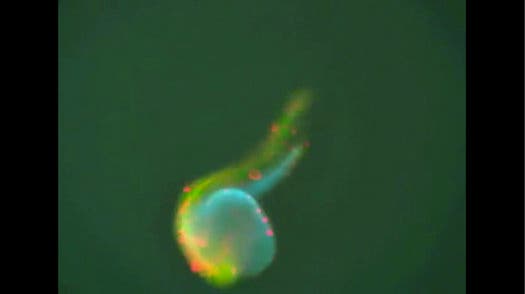
As any fourth grader will tell you, photosynthesis is (in layman terms), the process through which plants (and bacteria, algae, etc) get the sugars and other organic compounds they need using energy from sunlight. However, during last week’s synthetic biology conference in Boston, a biologist from Harvard took things to a whole new level, presenting a new and exciting idea: he injected a symbiotic cyanobacteria responsible for almost 50 percent of Earth’s photosynthesis into a fish.
He chose a zebra fish for this, because they are clear, which makes them excellent candidates for this kind of research. So they injected bacteria into fish embryos, and waited. The results ? Nothing special happened – which is amazing ! Both the fish and the bacteria grew normally, as you can see in the video here.
The bacteria didn’t generate enough energy to sustain the fish on its own, but it provided a well received nutritional boost. Pamela Silver, a biologist from Harvard, is leading a team that is working on methods to increase the cyanobacteria production. So does that mean that we’ll have photosinthetic animals, or even humans in the near future? Absolutely not. But when dealing with these kind of ideas, the near future means nothing; and in the more distant future? Why not…



